The end
River Country closed, as usual, towards the end of the warm weather season in 2001. Wikipedia pegs its final day of operations that year as November 2, but Disney’s own D23 website states that the park shut its gates on September 1. Fans expected it to open as normal the following spring.
However, on April 11, 2002, the Orlando Sentinel reported that “Walt Disney World’s first water park, River Country, has closed and may not reopen.” Bill Warren, a spokesperson for the resort, claimed that the park could reopen if “there’s enough guest demand.” Just two months later, however, another spokesperson, Rena Callahan, told the newspaper that “River Country will remain closed at least through 2002.”
The final confirmation of River Country’s permanent demise didn’t come until more than three years after its closure. On January 20, 2005, Disney finally announced that its first water park would never again reopen.
Since then, debate has raged among fans about the reasons behind the decision to shutter River Country. Rumors and misinformation abound, and Disney has never formally explained its reasoning. So let’s take a look at the potential causes for the loss of the world’s first themed water park.
1. Safety
As at most water parks, there were safety guidelines posted all over the place at River Country. The back of the 1993 park map offered this advice (along with many other rules):
Read over our safety rules on the back, then last one in is a…
- Swim attire with rivets, buckles, or exposed metal are not permitted on the water attractions.
- No running or diving, please!
- Our lifeguards are highly trained and qualified. Please adhere to their instructions at all times.
- Please observe that each attraction has its own unique guidelines. Some require that you be in good health and of a certain height to participate.
But, sadly, Disney's precautions were not enough to prevent some very serious incidents.
In 1982, 14-year-old Howard Pueppke drowned after getting into difficulties following the drop into Bay Cove’s lagoon at the end of Whoop 'n Holler Hollow. Although a sign had warned “Rapid Water – Strong Swimmers Only”, Pueppke’s attorney argued that there was no indication of how deep the water was at the end. According to Koenig’s Realityland, a Disney lifeguard also testified that on some days up to 75 people would need assistance after plunging into the lagoon. Pueppke’s parents were eventually awarded $375,000. It wasn’t the last drowning at River Country – 13-year-old Christopher Staff died at the park seven years later.
However, given that the park continued to operate for more than decade after the second incident, concerns about the safety of the park’s attractions seem unlikely to have played a part in Disney’s decision to close it.
2. A rare, deadly amoeba and new state rules
“You are missing part of the story,” claims one commenter on a previous article about River Country. “The legislature in Florida passed a law that paid swimming areas could not use freshwater or lake areas because of the amoeba that is well known to grow in these waters in Florida. This amoeba can be deadly. This is the main reason that River Country was closed so quickly after this law was passed.”
Indeed, the disease referred to - amoebic meningoencephalitis – was the cause of a well-publicised death at River Country, and state laws relating to the cleanliness of natural water bodies are often cited as the main cause for the park’s closure.
On August 28, 1980, a wire story from the Associated Press was widely published in American newspapers:
A rare but deadly disease caused by amoeba found in Florida fresh-water lakes has claimed its fourth victim - a New York youngster who spent his vacation swimming at Walt Disney World's River Country.
The disease, amoebic meningoencephalitis, attacks the nervous system and brain, doctors say. It killed two Florida children earlier this month and appears to have been the cause of death of another youngster, a state health official said.
The latest death was that of an 11-year-old boy who visited the Orlando area during the first week of August and swam at the water attraction at Disney World, said Dr. John McGarry, director of the Orange County Health Department.
The child died after the amoeba entered his nose, went through the nasal passage and attacked the nervous system, including the brain, according to Dr Robert Gunn, state epidemiologist.
The boy, who was not identified by New York or Florida health authorities, died last Friday, McGarry said.
David Voss, spokesman for the Florida Department of Health and Rehabilitative Services, said the deaths were similar in the three other cases.
Voss and McGarry said investigators from the US Center for Disease Control in Atlanta and the New York Health Department pinpointed River Country as the source of the amoeba after the New York child's parents reported that the amusement park was the only place where he went swimming recently.
Despite the tragedy having occurred at River Country, Walt Disney World was absolved of blame in the article:
The two officials said there was no reason to blame Disney World for the tragedy because the amoeba can breed in almost any freshwater lake during hot weather. Officials have said there is no epidemic of the disease in central Florida, where all four cases were detected.
Disney officials said there wasn't much they could do.
"We are of course concerned and sensitive to any potential safety hazard to our guests," said Disney spokesman Charles Ridgway. "I don't know of any action that could be taken as a result of this."
Ridgway emphasized that Disney World conducts a thorough program of water-quality control in cooperation with health officials.
There were no further cases of amoebic meningoencephalitis at River Country – if there had been, they would almost certainly have resulted in deaths as the disease has a fatality rate of greater than 95%. Disney did ban swimming its lakes in the mid-1990s. But, given that 21 years passed between the tragedy and the closure of River Country, it seems reasonable to assume that it played no direct role in Disney’s decision-making.
However, there are numerous reports online that make similar claims to this Martin County Times article, which states: “Disney’s River Country closed in September 2001, due in part to new Florida Laws prohibiting the use of natural water bodies, requiring chlorination and only municipal water supplies, for water park use. According to Ruin-Nation, a blog of abandoned places in the United States and beyond, ‘The deadly Naegleria Fowleri bacteria is said to be alive in the (River Country) park’s water during the hot summer months. This could also have added to the reasoning of the park’s final season.’”
The best analysis of these claims comes from Werner Weiss of Yesterland, who takes the time to analyse the current regulations governing water parks in Florida. The most pertinent one comes from the Department of Health’s Division of Environmental Health, and covers “public swimming pools and bathing places”. Its rules on water quality are thus:
The water supply for all pools shall be an approved potable water system or shall meet the requirements for potable water systems by the submission from the operator of bacteriological and chemical laboratory reports to the county health department.
As Weiss points out, this means that the water that guests actually swim in must qualify as potable (i.e. drinkable) water. It does not, as the report above suggests, require that it come from a municipal water source, nor does it outlaw natural water supplies. If the filtered water from Bay Lake was potable, then it would be deemed suitable.
In summary, the water regulations did not make it impossible for Disney to keep operating River Country. It’s possible, though, that the company may have been required (or wished) to improve the filtration systems used – and this would have cost money. By 2001, a number of other factors may have led to the company concluding that such an investment simply wouldn’t be worth it.
3. Competition
It wasn’t long before competition arrived for River Country in Orlando. Wet ‘n Wild opened in 1977, having been conceived by SeaWorld founder George Millay (probably to Disney’s frustration, it is often referred to as “America’s first water park”). In fact, in the company’s own history of Walt Disney World, Since the World Began, Jeff Kurtti notes (in a thinly-disguised dig at Wet ‘n Wild) that “Long before the proliferation of freeway-adjacent water parks, with their exposed structural supports, impersonal scale and cold aquamarine fiberglass structures, Disney designers created River Country.”
As noted earlier in this article, Walt Disney World took an aloof view of its competitors in the tourism industry during its early years. Management believed that since Disney could not possibility build everything, such supporting amusements would help to pull in more visitors to the areas where it built its own attractions, and – more importantly – to demonstrate the superiority of Disney’s offerings.
By 1984, though, things had changed. That year saw Michael Eisner (formerly CEO of Paramount’s movie studio) and Frank Wells (formerly head of Warner Bros.) brought in as Disney’s CEO and President respectively, in an ultimately successful attempt to strengthen the company and ward off hostile takeover attempts.
Eisner and Wells immediately saw the potential to exploit Disney’s theme park business for increased profits, and prices began to rise. The company’s attitude to its neighbors also began to change. Hotels and other attractions surrounding Walt Disney World were no longer “supporters”, but “competitors”. The resort’s previous approach of limiting hotel development, and leaving the lower end of the market to other operators, was dropped. Disney’s goal was now to draw as many people as possible to its property, and keep them there for the duration of their vacation.
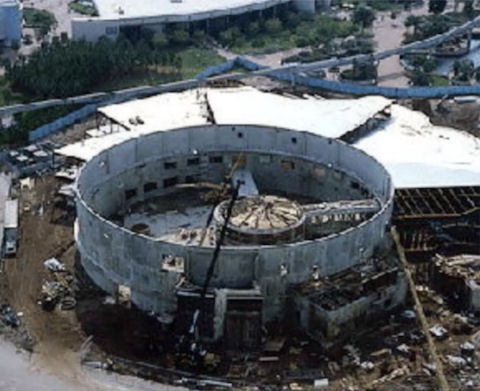
SeaWorld Orlando had initially been welcomed to the area with open arms by Disney when it opened in 1973. Eisner, though, was happy to clone others’ ideas if it could lead to increased profit. A half-hearted attempt was made to compete directly with SeaWorld in 1986, when the Living Seas Pavilion was opened at Walt Disney World’s second theme park, EPCOT Center. The ploy failed (SeaWorld Orlando enjoyed record attendance that year), but the pattern was set.
When Universal announced plans to build a version of its popular Studio Tour in Florida, Eisner was quick to counter with plans for Disney-MGM Studios. And he was no longer willing to watch guests leave the resort to visit Wet ‘n Wild, which was larger than River Country and offered a wide variety of more thrilling attractions.
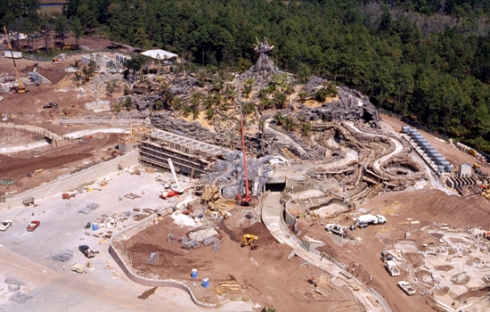
In 1989, Walt Disney World opened its second water park. Typhoon Lagoon was much larger than River Country, boasted many more attractions, was more conveniently located and offered extensive parking facilities. It did, though, share a sense of coherent theming with its predecessor. Essentially, it combined the best elements of Wet ‘n Wild with Disney’s own philosophy, and quickly established itself as an essential destination for guests at the resort.
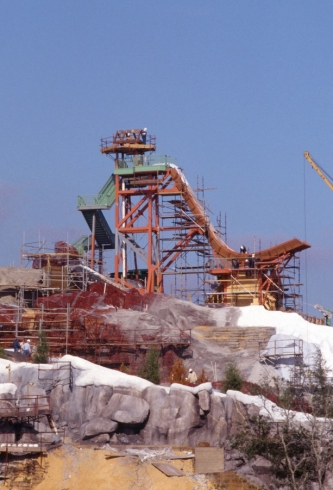
Six years later, a second large water park, Blizzard Beach, followed. Again, it was on a similar scale to Typhoon Lagoon – and dwarfed River Country. It had room for more guests, and could command a higher entrance fee.
Inevitably, the presence of two popular, more profitable other water parks must have contributed to Disney’s decision to close River Country.
4. Location
In 1976, River Country’s location close to Fort Wilderness made sense. Not only did it share a theme with the resort, but Disney was looking to invest in its campground, rather than further hotels. The resort’s other hotels were not too far away and reaching the park would not be a hassle.
By 2001, the situation had changed. River Country was still in a great location for those who were staying at Fort Wilderness, but there were now hotels spread far and wide across Walt Disney World. With its lack of parking, reaching the park – even using Disney transport – became something of a pain.
In addition, following the opening of Disney’s Animal Kingdom, Disney had made the decision to close Discovery Island and move many of its animal inhabitants to the new zoo-cum-theme park. River Country was therefore no longer part of a hub of attractions on Bay Lake, but was instead something of an outlier.
5. Capacity (or lack of it)
River Country could handle less than 5,000 guests a day. Although initially intended to operate year-round, it soon moved a seasonal schedule, largely because most of its pools were unheated (even the heated Typhoon Lagoon and Blizzard Beach have lengthy winter refurbishment periods every year).
The park initially proved to be very popular, and was often full to capacity. Although this was a good sign, it also limited its potential for profit. Whereas Typhoon Lagoon and Blizzard Beach regularly ranked in the top few water parks in the world as measured by attendance, River Country was nowhere to be seen in the top 15.
Expanding the park would have been hugely expensive, and the chronic lack of capacity (particularly when compared to Blizzard Beach and Typhoon Lagoon) is likely to have contributed to River Country’s downfall.
6. The impact of September 11
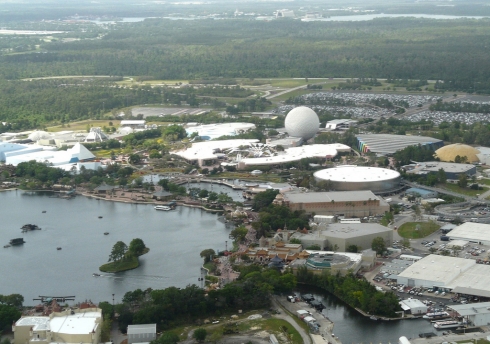
The terrorist attacks of September 11, 2001 had a huge impact on tourism in the USA, and Walt Disney World was badly affected. Attendance, and revenue, plummeted – and management were forced into drastic action.
Opening hours were cut at all of the resort’s theme parks. Entertainment schedules were culled. Staff were asked to work fewer hours, and contractors were laid off. The construction of Disney’s Pop Century Resort was stopped mid-build, and the second half was abandoned for years before eventually opening as Disney’s Art of Animation Resort in 2012. Many, many other money-saving moves were made resort-wide. It’s reasonable to assume that the failure of River Country to reopen in 2002 was one of them.
Although many of the cutbacks were reversed, not all of them were – and River Country’s temporary closure became permanent.
So why did River Country close?
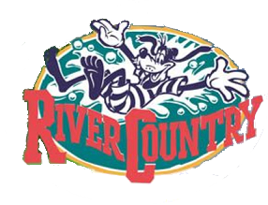
We don’t have a window into the minds of Walt Disney World’s management team at the time River County was closed. Given all of the above, though, it seems likely that River Country’s closure had little to do with health and safety concerns. Instead, what had been a significant new attraction in 1976 had become too small and not profitable enough by 2002, particularly in the wake of the September 11 attacks. Without the attacks, it may have continued to operate for a few more years, but it was always a tempting target for cost savings.
With four theme parks and two sprawling water parks on offer to guests, Walt Disney World had simply outgrown River Country.
But the story of River Country doesn’t end with its closure…
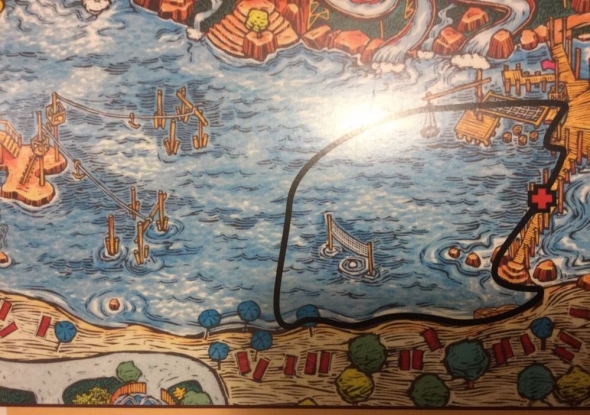
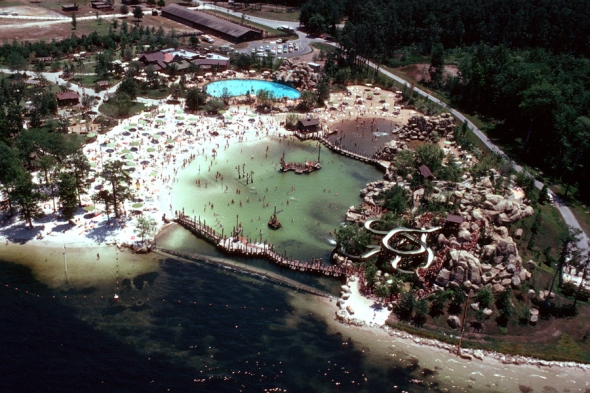
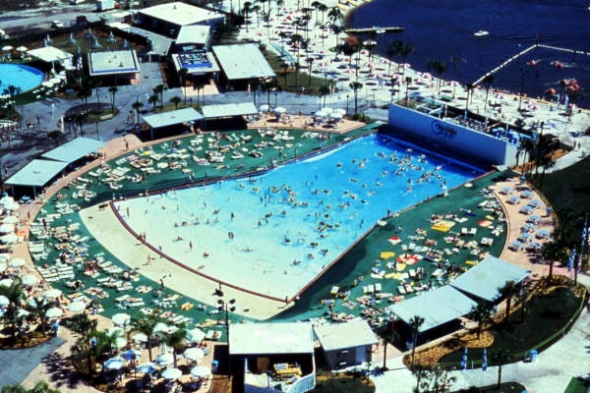
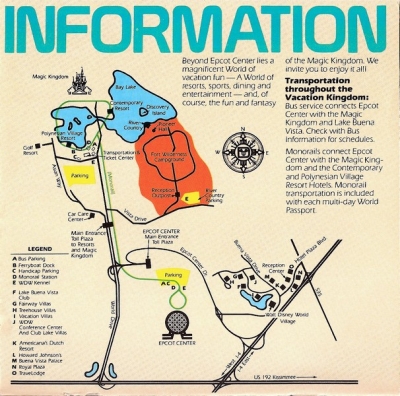
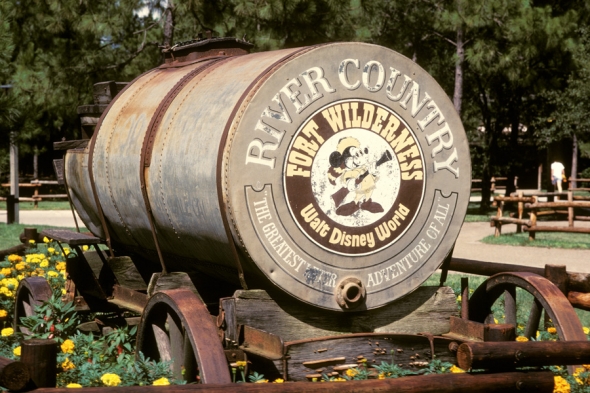

Comments
I was a lifeguard at WDW's River Country the last Summer it was open (September 2001.) I was terrified be assigned to this water park at first, but soon fell in love with it. The entire park was one of the only places on property that every cast member knew each other it didn't matter if you were a lifeguard, custodian, food services, guest relations. I got a ton of experience in my College Program experience working there. It was a place designed for strong swimmers, but it wasn't hard to guard; you just had to be on top of your game. I had visited the park a couple of times during family vacations prior to working there, so I knew what we were going into. The entire cast member family was devastated when we were informed that River Country wasn't planning on reopening because we had all been talking about seeing each other next season. I ended up moving to a full time lifeguard position at Typhon Lagoon and eventually went back home due to cut in hours after 9/11.
I remember visiting river country when very young. We stayed at camp wilderness. This was back in Nov 1988. I wasnt a swimmer and couldnt do most areas there i wanted to. I so wanted to do the innertube. Had to wait till grow up. Sadly. Never made it back in time to try. The one year when i was finally able to go was when they closed it down. I was excited in telling people about the park. Now all I have left is the memories. The new waterparks are always in refurb now when we go and not worth the extra money as it got so expensive. I had kept the one River Country towel with mickey, goofy and donald going down the slide. This towel now got so old and worn out it started to tear. So sad and can't get a new one anymore...
I believe we are losing too much history to technology and we should try to revive as much as we can and this is a perfect example. For a place that brought so much happiness and smiles it is bringing so much sadness from sitting and wasting away. I think Disney should reflect on what Walt Disney wanted in the first place; to put happiness and smiles into the heart of each and every person who attended here. Not to worry about the financial gain. Go back to the roots Disney!
I'm currently a Slide Operator at Disney's Waterparks. I feel like the updates on safety standards may have had more to do with the parks' closing than the article proposes. Reading the description of the attractions and looking at the photos, they are nowhere equipped with the standard safety features in almost all water parks today. First of all, all the slides spitting out into one giant (murky) catch pool makes it incredibly difficult to guard. Doubled by the fact that the pool is so large, and lifeguard stands can only be placed on the edges, it seems unlikely that a guard would be able to reach a victim in 20 seconds, the current standard held by Disney guards. A quote in the article talks about how fun White Water Rapids was because everyone got all piled up and sometimes you even fell out. This is the stuff Slide Operators' nightmares are made up of today. We operate on a timed red/green light system. Multiple guests in a slide flume are never allowed and a guest falling out would not cause laughter, it would cause a loud alarm to sound, shutting down the ride. This ride couldn't function on today's safety standards.
Moreover it seems like most of these rides require you to be a string swimmer, a growing problem where a complaint we get is that there aren't enough attractions at Typhoon and Blizzard for people who can't swim well. Why you'd come to a water park and can't swim is beyond me, but people do, and also attempt to put children on large slides younger and younger. It seems like trying to operate this park on today's safety standards would be a mess
My 11 year old son is autistic and has major issues about getting his face wet, but loves Adventure Island. Because of the issue, he has never wanted to learn how to swim. The best he's done is a weak doggy paddle. But, he's totally cool with getting his face wet there, but still won't swim. He's happy enough doing things that don't involve swimming, but I'm always right by his side... just in case. So yeah, it happens... parents bring kids to water parks even though they don't know how to swim. There's plenty of other things for them to do.